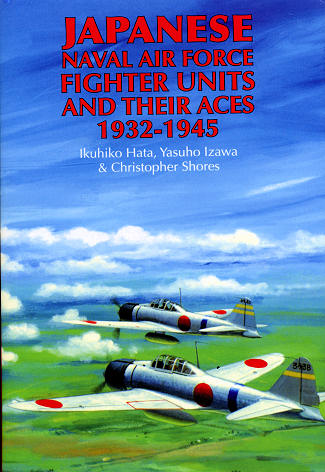 Outside of
Japan, there is not as much on Japanese units of WWII as you'll find for the
European theater or Allied Pacific units. Much of the reason for this is that
when the war ended, Japanese systematically went about destroying much of the
mountains of paperwork and photos related to the war. Some because they did not
want these materials to be used as evidence against them for war crimes, but
mostly because they did not want to be reminded of their defeat and did not want
to provide any information to the victors.
Outside of
Japan, there is not as much on Japanese units of WWII as you'll find for the
European theater or Allied Pacific units. Much of the reason for this is that
when the war ended, Japanese systematically went about destroying much of the
mountains of paperwork and photos related to the war. Some because they did not
want these materials to be used as evidence against them for war crimes, but
mostly because they did not want to be reminded of their defeat and did not want
to provide any information to the victors.
This has made research into the Japanese side of things
less than easy. Fortunately, not all was destroyed and much was captured outside
the home islands as the Allies worked their way through vacated Japanese
positions and bases. Much also came out from those survivors who were willing to
talk of their exploits and those of their comrades.
This volume is on JNAF fighter units and is about as
complete a body of work as you'll find on the subject. The two Japanese authors
produced a very similar edition for Naval Institute Press about 20 years back.
This volume contains much of their previous research, expanding on it with
additional information that has come forth in the convening years. It is also a
fine companion to their earlier JAAF fighter units book (which your reviewer has
not had the chance to read).
The book commences with a comprehensive account of the
operations of navy fighter units throughout the period covered by the book, from
the initial conflict with the Chinese and later with the Soviets before the
start of the Pacific war. After a well done overall history of JNAF operations,
which covers the first quarter of the book, we then get into individual sections
detailing the history and achievements of each unit involved, be it land-based
or aircraft carrier-based. This section is the heart of the book and includes
such things as their most successful pilots, aircraft types flown and codes
carried on the aircraft. This section contains most of the images of the
aircraft flown by the units as well as drawings of typical aircraft. The last
major section contains biographical details regarding all pilots claiming eight
or more aerial victories as well as photos of the pilots.
Of course, with this much research, you will have some pretty complete
appendices. These include detailed listings of all pilots known to have claimed
five or more victories (and thus considered to be Ďacesí); listings of the
graduation from training of all Japanese Navy fighter pilots, and of fighter
pilot casualties. There are also some color profiles of select aircraft flown by
the aces.
This all makes for a very comprehensive reference book
on the subject and is one of the reasons why it has taken me so long to read it
prior to this review. I would have to say that this is the best source on the
subject I have yet read and is very much a MUST HAVE for enthusiasts of the
Pacific War.
July 2011
Review book courtesy of
Casemate Publishing, where you can order your copy of this and many other superb books
and DVDs.
If you would like your product reviewed fairly and quickly, please
contact
me or see other details in the
Note to
Contributors.
 Outside of
Japan, there is not as much on Japanese units of WWII as you'll find for the
European theater or Allied Pacific units. Much of the reason for this is that
when the war ended, Japanese systematically went about destroying much of the
mountains of paperwork and photos related to the war. Some because they did not
want these materials to be used as evidence against them for war crimes, but
mostly because they did not want to be reminded of their defeat and did not want
to provide any information to the victors.
Outside of
Japan, there is not as much on Japanese units of WWII as you'll find for the
European theater or Allied Pacific units. Much of the reason for this is that
when the war ended, Japanese systematically went about destroying much of the
mountains of paperwork and photos related to the war. Some because they did not
want these materials to be used as evidence against them for war crimes, but
mostly because they did not want to be reminded of their defeat and did not want
to provide any information to the victors.